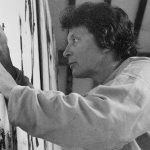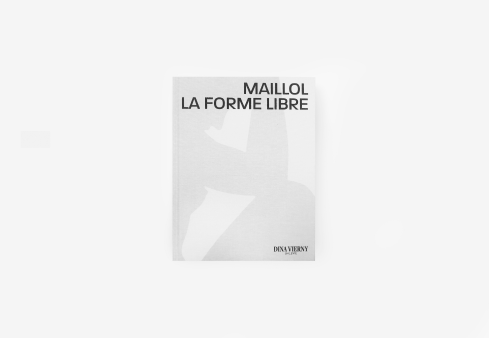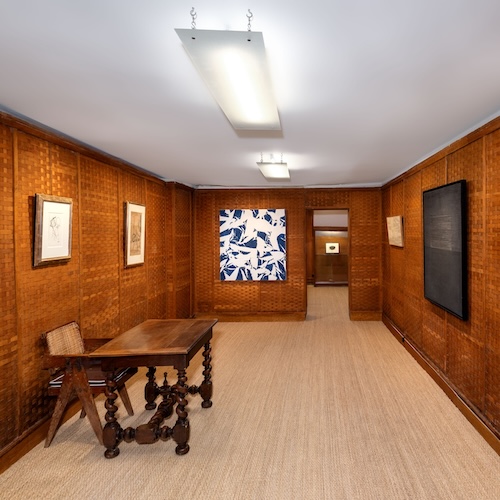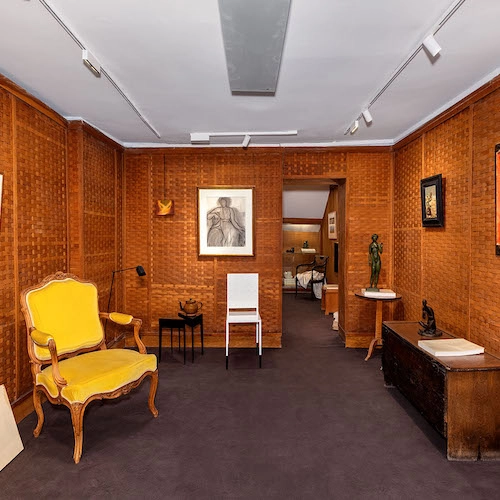Seventy-eight years after the inauguration of the Galerie Dina Vierny at its historic address on rue Jacob, Pierre and Alexandre Lorquin — grandsons of Maillol’s celebrated muse — are opening a second space at
53 rue de Seine. To mark this decisive milestone, an exceptional retrospective of Judit Reigl’s work will be presented simultaneously at both venues beginning on May 15, 2025. This exhibition spans over five decades of creation — from the 1940s to the 1990s — and brings together rare and, at times, previously unseen works.
The opening of this second space at 53 rue de Seine marks a turning point in the evolution of the Galerie Dina Vierny, reflecting the new momentum brought by Pierre and Alexandre Lorquin, who have led the gallery since January 2021. Following the development of a sharp curatorial program that combines museum-quality exhibitions, ambitious publications, an expanded presence at international art fairs, and the launch of several catalogue raisonnés, the gallery is now investing in the former Galerie Jaeger Bucher — a 200 m² space redesigned by architect Simon Basquin, bathed in natural zenithal light filtering through a large glass roof. This new venue allows the Galerie Dina Vierny to host more ambitious exhibitions, accommodate larger-scale works, and reaffirm its commitment to both modern and contemporary art.
“This new venue, which resonates deeply with our grandmother’s history, allows us to open a new chapter while reconnecting with the gallery’s original spirit — one that was always dedicated to presenting both contemporary artists and major figures of the twentieth century. It is this dialogue between eras that we seek to revive through our expansion on rue de Seine.”
It was in 1947, encouraged at the end of the war by Henri Matisse and Jeanne Bucher, that Dina Vierny, Maillol’s last muse, opened her gallery at 36 rue Jacob. At the time, Matisse convinced architect Auguste Perret — then heavily involved in the reconstruction of Le Havre — to design this modernist setting, which has remained unchanged ever since. Jeanne Bucher, who passed away in 1946, did not live to see the realization of the vision she helped inspire. With the opening of the new space at 53 rue de Seine, formerly the Galerie Jaeger Bucher, the gallery pays tribute to her legacy. These two addresses embody, in their own distinct ways, the two major figures who inspired Dina Vierny to embark on this remarkable journey.
To mark the opening, Pierre and Alexandre Lorquin have chosen to honor Judit Reigl, the first artist they decided to include in the gallery’s program upon their arrival. Following two thematic exhibitions held at rue Jacob, the use of both gallery spaces now offers a unique opportunity to organize a retrospective of unprecedented scale — the most comprehensive in nearly a decade — bringing together more than thirty major works by the artist, under the title "Convulsion with Fire". The rue Jacob venue will feature works created up to 1954, including her Hungarian period, her Surrealist phase, and the paintings exhibited at L’Étoile scellée by André Breton. The rue de Seine space will present her abstract and figurative series produced after 1954, including "Éclatement", "Centre de dominance", "Écriture en masse", "Guano", "Weightlessness Experiment", "Homme", "Déroulement", "The Art of Fugue", "Hors", and "Face à".
A catalogue will be published for the occasion, featuring an essay by art historian and critic Guitemie Maldonado.
Through this dual exhibition, the Galerie Dina Vierny pays a heartfelt tribute to a central female figure of twentieth-century art, while taking a significant step forward into a new chapter of its own history.
Judit Reigl - Convulsion with Fire
53 rue de Seine / from May 16 to June 14
36 rue Jacob / from May 16 to August 2
Biography
Judit Reigl was a painter whose work moved between Surrealism, abstraction, and figuration. Upon arriving in France in 1950, she reconnected with
Simon Hantaï, a fellow Budapest native, who introduced her to André Breton. Captivated by her Surrealist paintings, Breton invited her to exhibit at "L’Étoile scellée". Reigl later moved away from Surrealism to develop a series of works marked by intense gestural energy: "Éclatements" (1955–1958), "Centres de dominance" (1958–1959), and "Écritures en masse" (1959–1965). At the same time, failed canvases were kept on the studio floor, trampled underfoot, layered with pictorial residue, and reworked — these became the "Guano" series (1958–1965). More than formal elegance, Reigl sought authenticity in the gesture. In 1965–66, figuration gradually returned in the form of male torsos, with the series "Hommes" (1965–1972). Between 1973 and 1985, she created "Déroulements" (1973–1985), abstract canvases in which she deepened her exploration of automatic writing, made of colorful lines emerging in transparency from the reverse side of the canvas. The human figure took on a permanent role in her later series: "Face à" (1988–1989), "Un corps au pluriel" (1990–1994), "Hors" (1994–1999), and "New York, September 11, 2001" (2001–2002). Reigl always drew from the most profound experiences of her life to shape a wide-ranging and complex reflection on humanity. In search of essence and the absolute, her work bears witness to the unknown.
Judit Reigl’s works are held in the collections of the following museums: MoMA, New York; Guggenheim Museum, New York; The Metropolitan Museum of Art, New York; Albright-Knox Gallery, Buffalo; The Museum of Fine Arts, Houston; Tate Modern, London; Centre Pompidou, Paris; Musée d’Art moderne de Paris; Fondation Dina Vierny – Musée Maillol, Paris; MAC VAL, Vitry-sur-Seine; Musée des Beaux-Arts, Caen; Musée des Beaux-Arts, Grenoble; Musée Fabre, Montpellier; Musée des Beaux-Arts, Nantes; Arsenal, Musée d’art contemporain, Soissons; The Albertina Museum, Vienna; Hungarian National Gallery, Budapest; Neue Nationalgalerie, Berlin.











